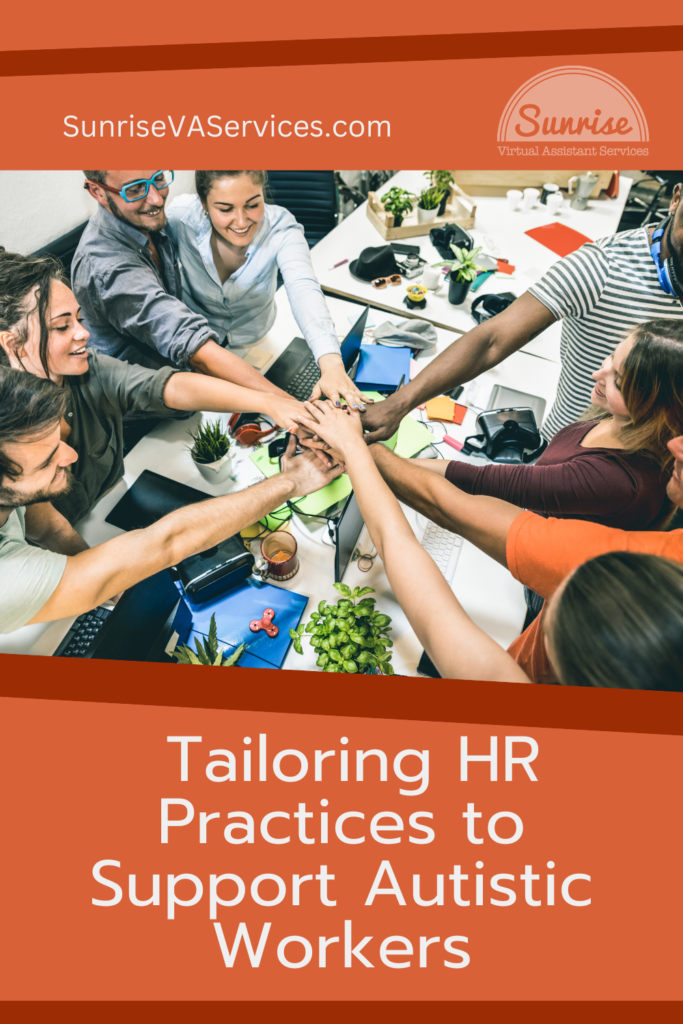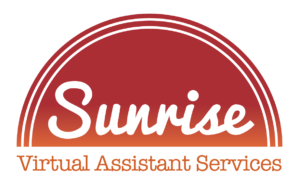The workplace is a melting pot of skills, personalities, and unique quirks that, when harnessed effectively, can drive innovation and elevate business outcomes. However, for autistic workers, the conventional work environment can present challenges, often leading to underemployment and untapped potential.
This post is dedicated to HR professionals and diversity advocates keen on understanding and fostering a more inclusive workplace for autistic talent. We will tackle tailored HR practices, foster organizational understanding, and outline actionable strategies to turn workplaces into accommodating and nurturing environments for all.
Understanding autism in the context of employment implies acknowledging that the traditional job interview, office layout, and communication approaches may not be the most effective channels for engaging with these individuals. Revamping HR policies, reshaping company culture, and adopting inclusive practices are vital steps in the right direction.
The Spectrum at Work: Unveiling Autism in the Workplace
Autism Spectrum Disorder (ASD) is a complex developmental condition that affects social interaction, communication, interests, and behavior. But, importantly, it’s also a spectrum disorder, which means it manifests in various ways and to different degrees in each individual. It’s not a one-size-fits-all diagnosis.
Breaking stereotypes and dispelling myths
Before we explore how to integrate autistic individuals more effectively into the workforce, we must first confront the misinterpretations that often shade our perspectives. Autistic workers possess a wide range of talents and abilities. One major myth is that autistic people can not be employed. To that, we say it’s simply untrue!
However, perspectives must change to further change the general population’s (misled) opinion of their autistic colleagues. Viewing neurodiversity as a difference rather than a deficit is vital to fostering a truly inclusive work culture.
Accommodations, not alterations
Creating an inclusive space for autistic employees and neurodivergent workers must start with the understanding that reasonable accommodations are not about favoritism or altering job standards.
Instead, they are about promoting equity and providing a level playing field that allows all employees to perform at their best.
Tailoring HR Practices
The role of HR is pivotal in crafting an environment that is truly accommodating. From recruitment and onboarding to career development, HR practices must evolve to reflect the changing landscape of workforce diversity.
Recruit differently to employ differently
Rethinking the approach to the standard recruitment process is fundamental. Traditional interviews can be daunting and don’t always showcase a candidate’s true capabilities.
Job recruiters and hiring managers should consider adopting a portfolio-based assessment or skills demonstration to better gauge the true potential of neurodivergent talent.
Onboarding with sensitivity
An autistic individual may experience sensory sensitivities that can be exacerbated during the onboarding process. Providing a quiet space, introducing changes gradually, and having clear communication about what to expect can ease the transition.
Building a path to success
Career development for autistic employees needs to be a collaborative process. To ensure your new team members’ growth and seamless integration, you must establish clear objectives, provide them with experienced mentors, and offer consistent feedback.
By doing so, you will empower them to thrive within the company and contribute to its overall success (not to mention increased employee retention!).
Cultivating Company-Wide Understanding
It’s not just HR’s responsibility to create an inclusive environment. Every organization member must be involved and knowledgeable about supporting their autistic team members and other neurodiverse employees.
Open dialogue and flexibility
Promote an environment of open dialogue. Autistic workers may have specific needs that, when communicated, can be easily accommodated. Open dialogue can also encourage other employees to become more open to their needs.
Some common accommodations many small business owners and major corporations have made include flexible working hours and remote work options. These types of accommodations should also be considered to help manage work-life balance and reduce stressful situations.
Implementing Communication Strategies that Work
Communication is at the heart of any successful organization. Adjusting communication styles can improve all employees’ collaboration, productivity, and job satisfaction.
Provide clarity of expectations
Be explicit about job expectations. Autistic workers, in ways no different than their neurotypical counterparts, can excel with clear guidelines and an understanding of what is required.
Ambiguity often leads to stress and decreased performance; a light tweaking of effective communication styles can go a long way! But let’s beat this horse just a bit more…
Supporting varied communication styles
Recognize and support various forms of communication. This may include written communication, the use of visual aids, or even technology-assisted communication to ensure that all voices can be heard.
Inclusivity in Performance Management and Recognition
A performance management system that acknowledges each employee’s unique strengths and challenges can empower them to perform at their best. With personalized feedback and recognition, both neurotypical and neurodivergent employees can feel valued and supported, leading to increased motivation and productivity.
Don’t settle for a one-size-fits-all approach—invest in an inclusive performance management system that considers each individual’s needs!
Customized feedback mechanisms
Understand that feedback is not one-size-fits-all. Some individuals prefer written feedback to allow for processing time, while others respond well to direct verbal communication. Using the preferred communication styles can help all employees feel respected.
Celebrating diversity in recognition
Recognize the diverse ways people contribute to the organization’s success when acknowledging achievements. This can include different types of projects, individual versus team successes, and even personal milestones (like extended social interactions).
Planning Sensory-Friendly Work Environments
Creating a workspace that caters to the sensory needs of autistic workers is crucial to promoting their performance at work. Making simple adjustments to the design of the work environment can make a significant difference in fostering a culture of inclusion and support for individuals on the autism spectrum.
Spaces that Inspire, not overwhelm
Create workspaces that are free from sensory overload. This could mean incorporating natural lighting, using noise-canceling materials, and providing spaces for quiet and reflection.
Ongoing environment maintenance
Managers and HR members should regularly review and maintain the sensory aspects of the workspace. What may work for one employee may not work for another.
Feedback and open dialogue are most needed in these instances. However, flexibility and reasonable adjustments ensure a supportive environment for all.
The Way Forward with Policy and Legal Frameworks
Articulating policies and frameworks that explicitly support neurodiversity ensures that inclusivity becomes a part of the organizational DNA, not just a catchphrase.
Policy development with a purpose
Commit to developing policies that account for the needs of all employees, including those on the autism spectrum. This could involve leave policies to accommodate therapy sessions or flexible leave hours during high-stress periods.
The legal landscape
Stay informed about the legal requirements concerning the rights of neurodiverse individuals in the workplace. Advocate for policy changes where necessary to create a more inclusive legal framework.
The Power of Community and Support Networks
Creating a robust community within and beyond your organization can lay the groundwork for long-lasting and effective inclusion initiatives.
By tapping into external support networks and fostering a culture of inclusivity within your team, you can ensure that your efforts to create a more diverse and equitable workplace are sustainable and impactful.
Internal employee resource groups
Encourage the formation of internal ERGs focused on neurodiversity. These groups can serve as safe spaces for sharing experiences and as a launching pad for action.
Connecting with external organizations
Forge partnerships with external organizations that support autism and neurodiversity in the workplace. Collaborating with organizations and experts can provide valuable insights and resources for your inclusion efforts.
Case Studies and Success Stories
Real-world examples of successful inclusion strategies resonate deeply and provide inspiration and practical guidance for your initiatives.
Highlighting Accomplishments
Share the stories of autistic individuals who have thrived in your organization. These accomplishments serve as powerful testaments to the effectiveness of your inclusion practices.
Learning from Others
Look to industry leaders and learn from their successes and setbacks. Many organizations are paving the way for inclusive workplace cultures and are often willing to share their own HR processes and experiences.
Conclusion: The Continuous Journey of Inclusion
Inclusion is not a checkbox to be tallied but a continuous commitment to creating a welcoming space for all individuals, regardless of their neurodiversity. By tailoring HR practices, fostering company-wide understanding, and implementing communication strategies that work, we can nurture the talents of autistic individuals and provide them with a fertile ground to flourish.
It’s a collaborative effort that requires listening, adaptability, empathy, and a bold vision for a more diverse and inclusive future. The benefits are clear: a happier, more fulfilled workforce and an organization that is more innovative, agile, and successful. It’s time for every company to recognize and celebrate the unique strengths that all its employees, including those on the autism spectrum, bring to the table. The future of work, after all, is inclusive.


